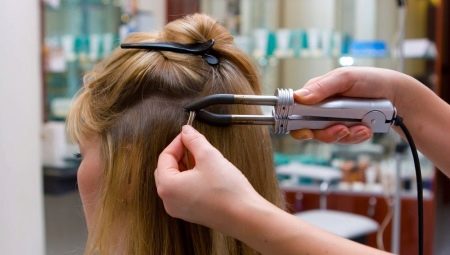Women can change their hairstyle, hair length and add curls to curls - but to increase the density of hair is unrealistic, it is laid genetically. The amount of hair follicles that a person receives at birth remains with him for life and can only decrease over time. However, for girls who dream of a luxurious mane, there is a great way out - building up for volume.
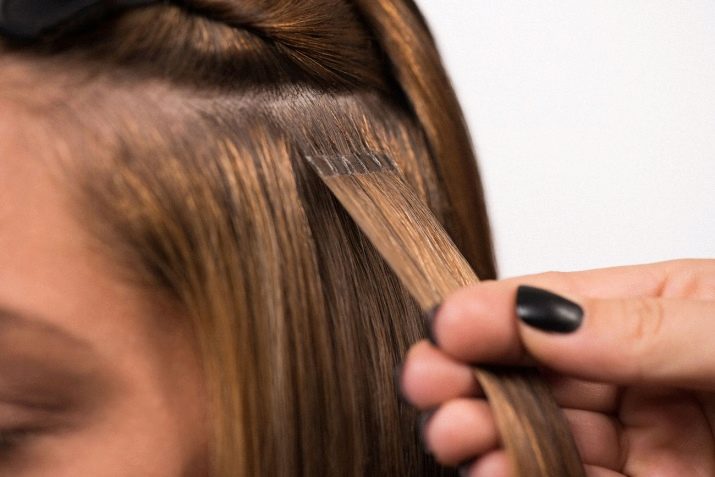
Kinds
Increasing the density of hair with full preservation of the length and type of haircuts can be partial or complete. In the first case, donor strands are located zonally. This is done specifically in order to level the visual lack of volume and to focus on some individual elements of the hairstyle. In the case of a full extension, artificial strands are placed evenly on the temporal and lower occipital area, but for some styles of hairstyles, strands can be used on the upper occipital part of the head.
Regardless of what type of extensions you choose, acceptable boundaries for attaching artificial strands are set, it is not recommended to go beyond them, otherwise an excess of donor curls will make it difficult to lay, and it looks extremely unnatural.
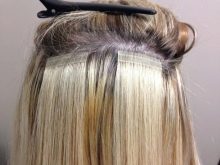
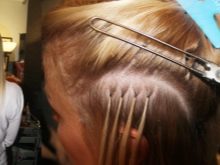

Scheme
The growth for the volume can be done on absolutely any haircut, of course, except for the "hedgehog". Moreover, the layout of artificial locks is suitable for all types of hairstyles. For hair of large and medium length, as well as for cutting bob and bob, the material must be fixed no higher than the temporal and lower occipital region.
If the extension is done on short hair, then partial attachment of donor strands will not be the best option, because in this case, uneven density will make the overall appearance unnatural, for example, excess fluffiness on the temples will visually form a square on the head, however, and the lack of volume on side sections also look pretty ugly. That is why the extension for the volume of hair 6–9 cm long, the strands should be added evenly, and for hair shorter than 5 cm, extension does not make sense at all.

Methods
It is much easier to add volume to your hair than to grow strands in length, since in this case the face of your own hair does not need to be blocked with artificial ones. The number of strands that will be needed for volumetric extension depends solely on the natural density of the native hair and its length, in addition, on the dimensions of the fixtures used. When working with thin and very sparse hair, it is better to avoid the use of bulky structures for attaching synthetic material, since additional weighting increases the pressure exerted on the bulbs, in addition, it will be very difficult to hide such an attachment, which is why the tress method, as well as weaving into a braid , in this case, do not use.
The tape method is also not suitable for weakened hair.


But capsule technology is considered optimal. This is a fairly universal type of fixation that can be used to grow hair both in volume and in length. The method is optimal for a complete change in the volume and density of hair, as well as for the correction of hairstyles and haircut models. For example, if you plan to get rid of the asymmetry on the head or, on the contrary, do it. Capsules are suitable for giving hair multi-colored accents and for the usual increase in splendor.
With capsule building, you can adjust the number and size of donor strands. For example, if you want to add volume to the roots, you can increase the number of capsules used by attaching them with a solid strip without a space between them. No less important is the thickness of the capsules themselves. Traditionally, they can be of the following sizes:
- standard - 5x5 mm;
- mini - 4x4 mm;
- micro - 3x3 mm.
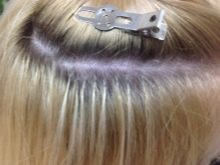
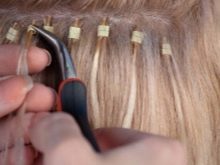
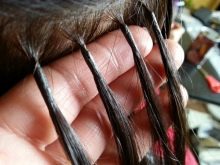
To make the donor material look as natural as possible with native hair, use capsules of several sizes at once, which is quite simply explained. Follicles on the surface of the head are uneven. So, at the temples the number of bulbs is much less than on the crown of the head and in the back of the head; therefore, the natural density on the sides is always less.
To hide the presence of donor strands in these areas, microcapsule building is used. To increase the hair on the back of the head, it is better to use standard capsules.
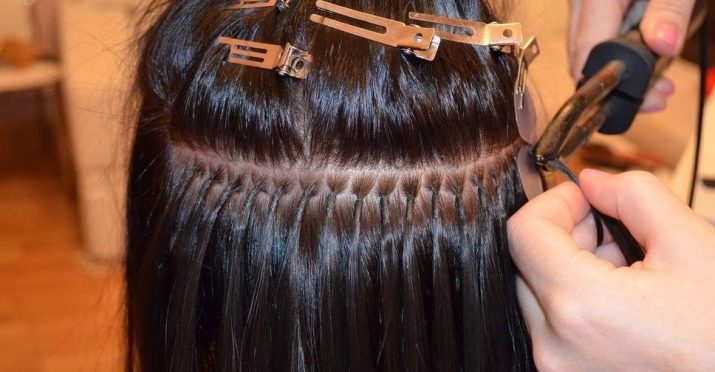
Method selection
There are several basic options for building hair for volume. It is worth considering the most popular.
- African technique on tress It is considered the most sparing, since it does not require the use of either glue, or thermal forceps, or metal clips. According to this technique, the hair is attached to the pigtail with a special thread, while you can position such a mane as you like - pin it forward or sideways, if desired, you can put it in a horse’s high tail, while the capsules will not be visible. However, this method is applicable only to long and medium hair.
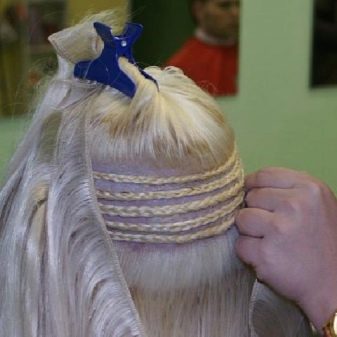
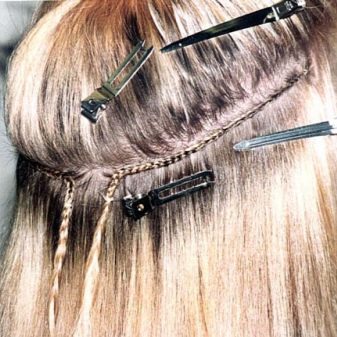
- You can change your hairstyle and volume very easily and quickly, creating a completely new vibrant look, using Brazilian building. Let's make a reservation right away - this method is also optimal for long, fairly dense hair initially. In Russia, technology has gained popularity relatively recently, but almost immediately became the most popular. This is not surprising, because the Brazilian extension does not require glue, adhesive tape and the use of chemical compounds - here additional hair is simply woven into their own, while the hairstyle looks completely natural,without creating a feeling of heaviness on the head and “foreignness” of weaving.
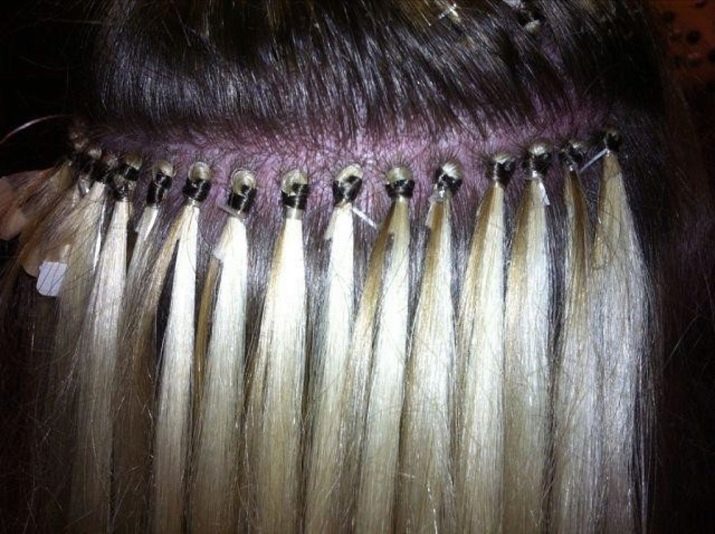
- A very interesting build-up option for volume was invented in Japan. This technique involves fixing the donor strands to their own using small rings, matched to match the color of the hair. This procedure is quite painstaking and takes at least 3-4 hours, during which time the master attaches about 200 locks. However, all these expectations are fully justified - the hairstyle remains flawless for 4–5 months, although every 2 months it still requires correction.
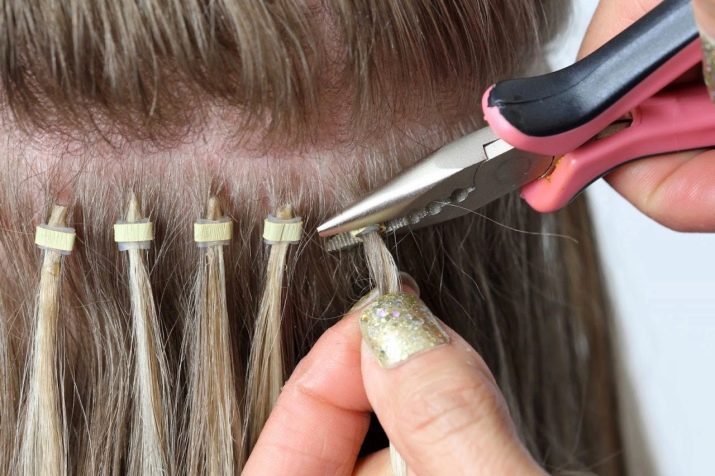
Important! All of these techniques are cold. Despite their effectiveness, most women prefer hot building.
- The most popular is Italian. In this case, overhead locks are fixed on their hair with the help of special keratin capsules by applying thermal forceps. Keratin is an absolutely natural material that is already present in the body of every person, with a lack of it, delamination of the hair occurs, which is expressed in the effect of the cut ends. The Italian hair extension does no harm.
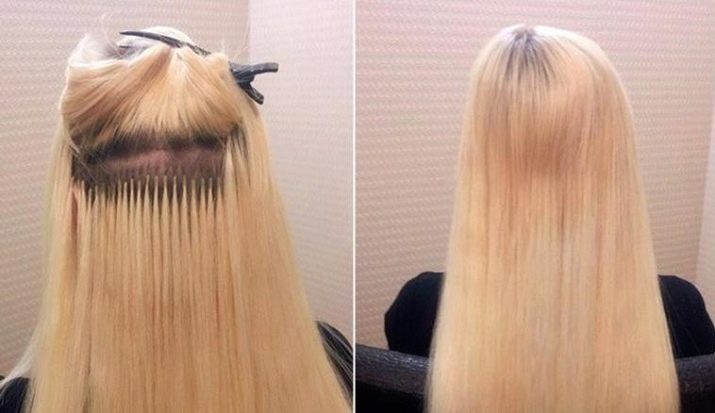
- With the Spanish method of building donor locks are fixed on relatives with the help of a special two-component glue, the master softens it with a special activator and creates a capsule with his own hands. It is small and practically invisible to the eyes, is not felt when touching the hair and does not interfere with rest.
It should be noted that when drying, such capsules brighten, so the way of building is optimal for fair-haired women, and brunettes are better to pay attention to other methods.
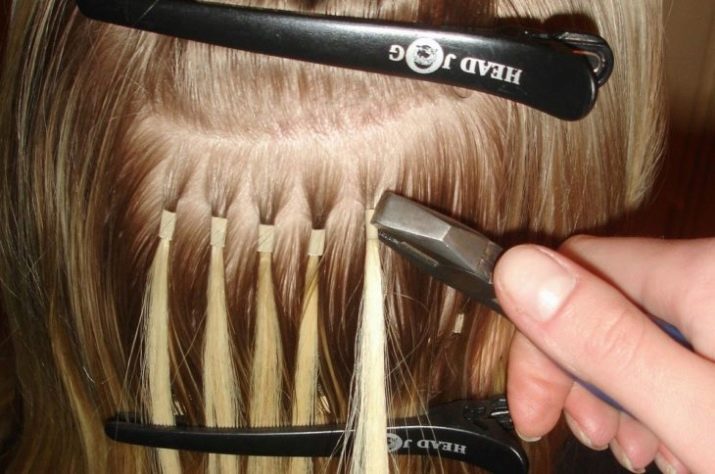
- French building involves the use of microcapsules based on special gel polymer compositions. They are invisible on the hair, do not create a feeling of confusion and do not weigh down the hair.

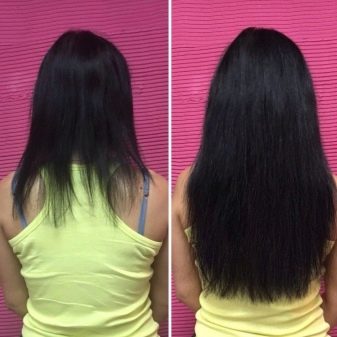
- If you do not need additional volume for a long time, for example, you want to make a mane for a wedding, birthday or other special occasion, then you can use hair extensions on hairpins. Usually they are attached to their own locks, and this procedure does not last long, and you can get rid of donor hair on your own without going to the hairdressing salon.
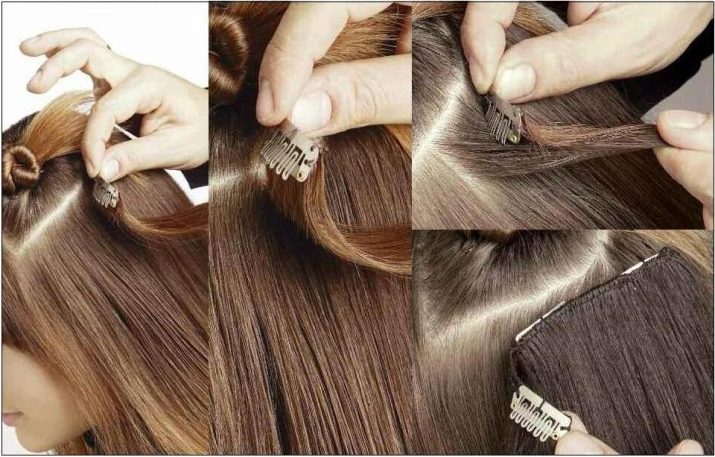
See how to make build-up with tresses in the next video.
